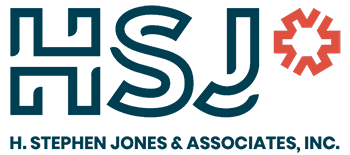Surveillance systems are more sophisticated and accessible than ever before. New advancements in artificial intelligence, application integrations and connectivity are creating endless opportunities for these systems to improve operations and safety. This article will give you insights into the latest surveillance system capabilities and explain how they will impact you.
Top Trends in Surveillance
1. Artificial Intelligence
Artificial intelligence continues to drive innovation across industries. AI advancements in surveillance systems have improved detection, analysis, and classification accuracy. These improvements allow systems to confidently trigger automated workflows based on their observations. Precise measurements can now be executed on manufacturing lines and gesture identification can be done where a system detects if a motion is aggressive or outside normal operations like someone falling.
Examples of new AI enabled use cases include automated monitoring of policy/procedure compliance and identifying when physical altercations, injuries and active shooter scenarios are imminent. The improved classification abilities also make forensic investigations more efficient. Investigators are able to perform advanced searches based on specific criteria like someone’s clothing, face or license plate to expedite requests for footage.
The pandemic has also sparked more interest in AI surveillance solutions. Organizations are using AI-based analytics to monitor handwashing in healthcare settings, mask usage, social distancing and occupancy levels. In these deployments, automated alerts and signage are triggered to request employees/visitors to follow mask and social distancing guidelines in facilities.

2. Edge Processing
Reductions in microchip sizes have enabled cameras to provide more advanced processing (detection capabilities) right on-board the camera (“at the edge”). This means the processing and analysis involved in the detection of a “trigger event” by the surveillance system is done without having to transmit the data to the server. This matters because it greatly reduces the time needed to detect an event that triggers a response to a scenario or problem. Before, the camera had to send compressed video to the server for the pixels and frames to be analyzed. Now, that processing is all done instantly on the device and surveillance solutions can immediately trigger reactions based on what they detect.
3. Application Integration
Today’s business consumer demands maximum value out of their investments. Having an open architecture security platform that allows for multiple surveillance application integrations will deliver the greatest ROI. Surveillance and access control system integrations are becoming standard in most critical infrastructure facilities because of the efficiencies they bring to security operations. Surveillance integrations with building automation systems and clinical systems are also being adopted to improve operational efficiency and safety/security.
Surveillance sensors come in many different form factors and varieties now because of the different objects and substances they are designed to monitor and analyze. Thermal and LiDAR are two of the fastest growing sensor types. They’re being used to detect people/objects/substances as well as map out environments/buildings. Like most smart surveillance systems, these devices are searching for particular signatures they have been preprogrammed to identify or anomalies in what they have learned to be normal conditions.
4. Cybersecurity
Cyberattacks on surveillance systems can cause two big problems for users. The first is the exposing of sensitive video footage from your surveillance network. We have seen this happen recently inside hospitals and Fortune 500 companies where leaked footage of their patients and employees was made publicly available on the internet. This is a privacy nightmare and also leaves organizations severely vulnerable to corporate espionage and intellectual property theft. The second problem is that surveillance device breaches often give the attacker access inside the organization’s network. This can lead to ransomware attacks and the deployment of network resources in botnet attacks. You can expect to see improvements in surveillance device cyber hardening requirements, including methods to protect the data collected, compliance regulations, and industry performance standards.
Dahua and Hikvision cameras were deployed like wildfire over the last decade due to their cheap cost with above average performance. They’ve now been banned for use at any Federal facilities based on their system vulnerabilities and tight ties with foreign government operations. Organizations of all sizes are recommended to update their cameras firmware immediately and to switch to different brands of cameras as quickly as possible.
5. Virtual Rounding and Monitoring
The need for virtual rounding/monitoring in healthcare was brought to the forefront during the COVID-19 pandemic when shortages in staff and PPE were rampant. Virtual rounding involves using 2-way audio/video systems for clinicians to monitor and communicate with patients from a centralized clinical command center. Leading hospitals have been using clinical command center monitoring for patients over the last decade but adoption has been slow due to the cost of deployment, connectivity challenges, and patient privacy concerns. These barriers to entry have now been overcome by new innovative surveillance products with better video compression and added privacy features designed specifically for virtual rounding applications. Clinician staff shortages continue to plague healthcare systems and innovative solutions like virtual rounding systems are a must have for the future.

6. Cloud-based Solutions
The benefits of cloud technology in video surveillance are significant. Cloud-based solutions provide endless storage, incredible data processing power, higher security and constant data redundancy. While some organizations are still uncomfortable putting sensitive surveillance footage in the cloud, it is still the system architecture we see most organizations migrating to. They’re moving because cloud solutions deliver increased data security, streamlined maintenance, advanced data reporting, remote access, storage flexibility, multi-site (federated) management, and faster disaster recovery all at a lower cost than on-premises systems.
7. Contactless Access with Facial Recognition
COVID-19 has moved many industries towards contactless facial recognition based access. These facial recognition based biometric access control solutions are integrated with automatic doors and turnstiles to provide contactless access to areas within a facility. Cameras read a user’s face then trigger the access control system to unlock the door and the automatic operator to engage so the door is opened without any contact with a door handle. Adding a card swipe or mobile credential swipe to the same facial recognition process gives you two-factor authentication for highly secure areas. One detriment to this approach is that it can often add tailgating risks. Anti-tailgating solutions should be put in place when contactless entry solutions are used in high security environments.
2021 Video Surveillance Summary
To recap, the demand for smart surveillance solutions that provide improvements in both security and operational efficiency will grow exponentially over the next decade. Sensors will be deployed across industries that can monitor, measure, analyze, and trigger responses to a wide variety of scenarios. As you deploy new surveillance solutions, you must be a steward of the data captured, stored, and shared to ensure compliance with data privacy regulations and avoid data breaches.
HSJ has insight into where the surveillance industry is headed and which solutions will solve your organization’s biggest challenges. Whether you need a system evaluation, redesign, or are expanding your facilities, HSJ’s experienced team can guide you through the entire process from planning and design through implementation and operations. Contact our team today for an initial consultation!




 © 2025 By H. Stephen Jones & Associates, Inc.
© 2025 By H. Stephen Jones & Associates, Inc.